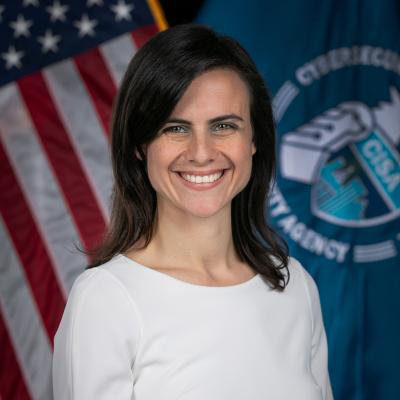Amid growing concerns about the capabilities of artificial intelligence and its cybersecurity threats, the Department of Homeland Security’s Cybersecurity and Infrastructure Security Agency (CISA) named its first chief AI officer this week.
In the new role, Lisa Einstein — who has served as CISA’s senior adviser for AI since 2023 and as executive director of the agency’s Cybersecurity Advisory Committee since 2022 — will oversee the agency’s “ongoing efforts to responsibly govern our own uses of AI and to ensure critical infrastructure partners develop and adopt AI in ways that are safe and secure,” CISA said in a statement Aug. 1.
CISA Director Jen Easterly said Einstein has been “central” to CISA’s efforts over the past few years to “come together … to understand and respond to rapid advancements in AI.” She said the new role will help the agency “build AI expertise into [our] fabric … and ensure we are equipped to effectively leverage the power of AI well into the future.”
The agency’s statement called “the responsible use of AI … increasingly relevant for the security of critical infrastructure.” In its webpage on AI, CISA noted its concerns about security challenges associated with the technology, warning that as with previous software advancements, developers must keep a primary focus on security; failure to do so means customers will bear the ultimate burden of security.
CISA’s previous work on AI includes the “Guidelines for security AI system development” published last November with the U.K.’s National Cyber Security Centre. The document provides a framework for software developers to “build AI systems that function as intended; are available when needed and work without revealing sensitive data to unauthorized parties”; and can be used both by developers creating AI systems from scratch and by those adding AI to existing systems. (See CISA Releases AI Security Guidelines.)
However, CISA sees AI as more than just a threat. Two of the five lines of effort on the agency’s Roadmap for Artificial Intelligence call for it to take advantage of the technology. Line 1 commits CISA to using AI tools “to strengthen cyber defense and support its critical infrastructure mission,” while ensuring “responsible, ethical and safe use.” Line 5 promises CISA will “expand AI expertise in our workforce” by educating current employees on AI software and by recruiting new talent with the required experience.
“I care deeply about CISA’s mission: If we succeed, the critical systems that Americans rely on every day will become safer, more reliable and more capable,” Einstein said. “AI tools could accelerate our progress. But we will only reap their benefits and avoid harms from their misapplication or abuse if we all work together to prioritize safety, security and trustworthiness in the development and deployment of AI tools.”
The ERO Enterprise also has identified AI as a concerning trend, though its focus so far has been the effect of applications requiring large data centers — including AI and cryptocurrency mining — on load growth. In its latest Long-Term Reliability Assessment, released earlier this year, SERC Reliability identified data centers as a key driver for growth in its PJM subregion. (See SERC Highlights DERs, Extreme Weather Challenges in LTRA.)
